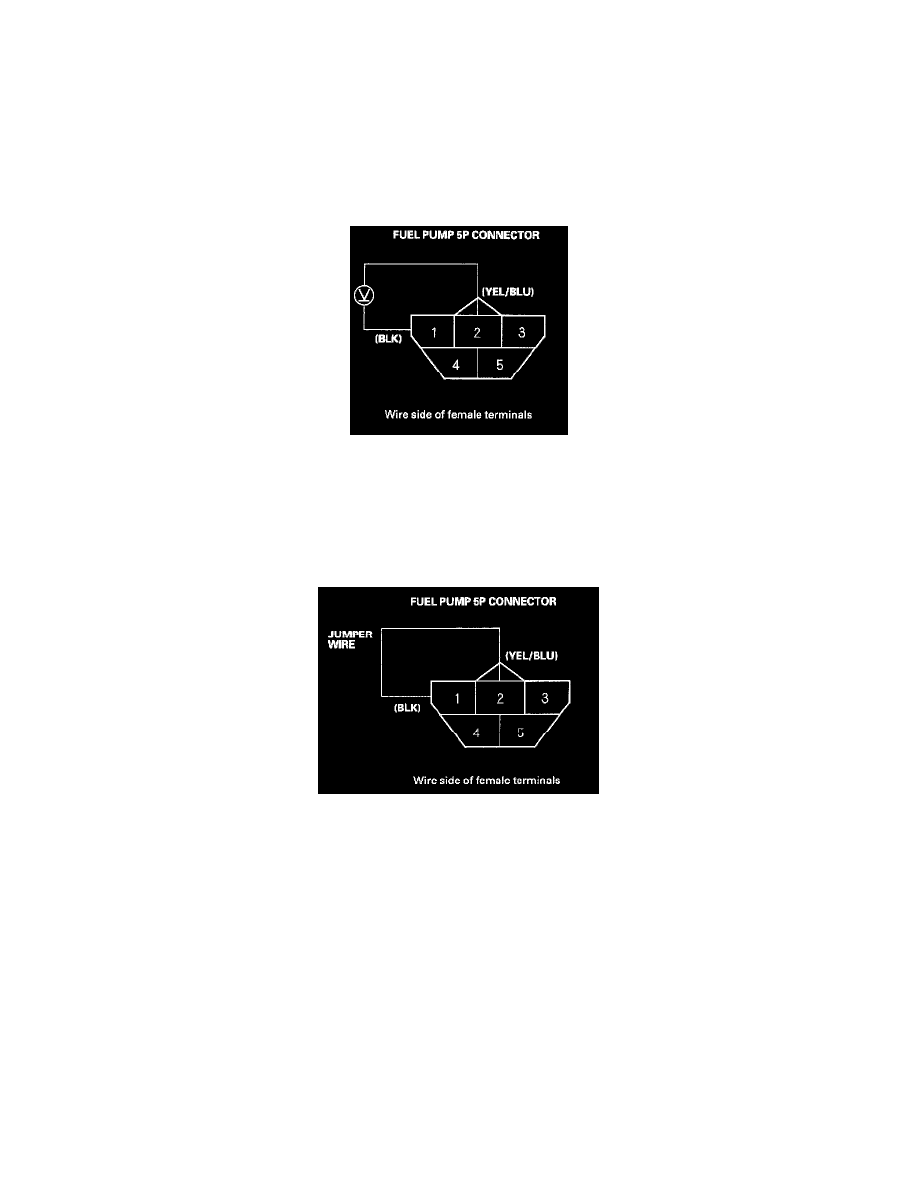Accord DX Sedan L4-2254cc 2.3L SOHC MFI (2001)

Fuel Gauge: Testing and Inspection
Fuel Gauge Test
NOTE: For the fuel gauge system circuit diagram, refer to the Gauges Circuit Diagram.
1. Check the No.9 BACK Up LIGHT INSTRUMENT LIGHT (7.5 A) fuse in the driver's under-dash fuse/relay box before testing.
2. Turn the ignition switch OFF.
3. Remove the spare tire lid.
4. Remove the access panel from the floor.
5. Disconnect the fuel pump 5P connector.
6. Measure voltage between fuel pump 5P connector terminals No.1 and No.2 with the ignition switch ON (II). There should be between 5 and 8 V.
-
If the voltage is OK, go to step 6.
-
If the voltage is not as specified, check for:
-
an open in the YEL/BLU or BLK wire.
-
poor ground (G552).
7. Turn the ignition switch OFF.
8. Connect fuel pump 5P connector terminals No. 1 and No.2 with a jumper wire, then turn the ignition switch ON (II).
9. Check that the pointer of the fuel gauge starts moving toward the "F" mark.
-
If the pointer of the fuel gauge does not move at all, replace the gauge.
-
If the pointer moves, the gauge is OK; inspect the fuel gauge sending unit.
NOTE:
-
Turn the ignition switch OFF before the pointer reaches "F" on the gauge dial. Failure to do so may damage the fuel gauge.
-
The fuel gauge is a bobbin (cross-coil) type, so the fuel level is continuously indicated even when the ignition switch is OFF. The pointer
moves more slowly than that of a bimetal type.
